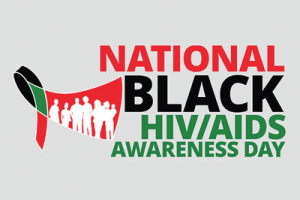

NBHAAD 2018: TAKING THE HIV/AIDS FIGHT TO THE FUTURE
By Tamara E. Holmes
In order for a movement to endure, there must be a plan for the future. National Black HIV/AIDS Awareness Day (NBHAAD) on Feb. 7, 2018, is a great time to assess the state of the HIV/AIDS epidemic in Black America and plan a forward-thinking response.
National Black HIV/AIDS Awareness Day started in 1999—the same year that the Black AIDS Institute was launched. “A lot has changed in the last 19 years—tremendous improvements and advances,” says Phill Wilson, president and chief executive officer of the Institute. “Unfortunately, those advances have not benefited all communities equally.”
Wilson recently announced his retirement later this year, and in his last NBHAAD as leader of the organization, the activities reflect the importance of crafting a next-generation response.
Today’s Challenges, Tomorrow’s Strategy
New challenges call for an updated approach. For ex-ample, the political climate makes the fight against HIV/AIDS even more challenging than in years past, Wilson says. “The intersectionality between race and HIV is so clear. We have a president and an administration that is attacking efforts to fight HIV directly, while at the same time attacking Black people along with it. National Black HIV/AIDS Awareness Day provides an opportunity for us to look at that clearly and work on initiatives and strategies to respond to those attacks.”
One initiative that will be launched on NBHAAD is a new PrEP (pre-exposure prophylaxis) clinic in Los Angeles in partnership with St. John’s Well Child & Family Center, a federally qualified community health center.
“The Black community has historically been underserved and has historically not had the kinds of services that other communities have had,” says Jim Mangia, president and chief executive officer of the center. “I hope that we can build a program that effectively prevents the spread of HIV amongst the African American population in South Los Angeles.”
The PrEP Clinic is part of a broader partnership between St. John’s and the Institute. The two organizations will open a Black men’s primary clinic in the Leimert Park neighborhood of Los Angeles in April and a Black gay men’s drop-in center in Compton before the end of the year.
“St John’s serves close to 100,000 patients every year,” Mangia says. “To be able to use all of the resources that we have—from healthcare services to over 70 doctors on staff, to 15 clinic sites, to two mobile units—to be able to marshal all of those resources in partnership with the Black AIDS Institute in a culturally sensitive and empowering way—just breaks down all the barriers that exist to the Black community accessing care.”
Education Through Art
Another initiative planned for NBHAAD is a lunchtime program with Paramount Studios on Paramount’s lot, featuring the Crew, an organization for HIV-positive men to express themselves through art. “It basically is a blend between a dance class and a support group, and we talk about different issues that are prevalent in the lives of people that are living with and affected by HIV,” says Thomas Davis, a director of the Crew.
For the Paramount event, participants will receive information about HIV while being inspired and entertained. “Essentially, we’re going to do four acts, where the Institute will provide HIV information, and then the Crew will be responsible for an artistic piece that reflects that message,” says Erica Lillquist, program manager for the Black AIDS Institute.
“Each year Paramount Pictures proudly recognizes National Black HIV/AIDS Awareness Day. This year, we are excited to partner with the Black AIDS Institute to help raise awareness and support through our Paramount Fights HIV/AIDS initiative,” says Erin Jordan, manager of corporate responsibility at Paramount Pictures.
“The goal of the program is to acknowledge that the HIV/AIDS epidemic still exists, while celebrating all of the progress that has been made,” Lillquist says.
“It also can serve to help combat stigma,” Davis says. “What I would like is for people to really put themselves in the shoes of others and try to see the world from a lens that they may never experience for themselves, and truly gain a deep sense of empathy and understanding.”
As the Institute takes part in all of its NBHAAD activities this year, the organization is committed to creating a positive message of hope for the future and dedication to meeting the challenges of tomorrow effectively.
“There is still a huge need to at least once a year shine a spotlight on the AIDS epidemic and Black communities,” Wilson says. “But every day is Black AIDS Awareness Day at the Black AIDS Institute. My departure is part of a larger strategic process at the Black AIDS Institute to make sure Black folks lead the HIV/AIDS fight and the next generational response to the HIV epidemic.”
Tamara E. Holmes is a Washington, D.C.-based journalist who writes about health, wealth and personal growth.


Be the first to comment